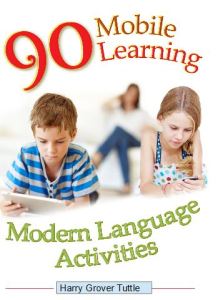Do world language teachers engage all students equally? Do they have an equitable distribution of questions for all students as indicated in the Teacher Expectations and Student Achievement model? The research shows that teachers consistently call on those students with higher ability more often than students of lower ability. (Teacher Expectations for Student Achievement: TESA and GESA, http://schoolfile.org/index_files/u4/tesa.pdf). Those students who do not get called on as often feel inferior to the other students. Often those of lower ability need as much if not more teacher time as students of higher ability.
Teachers can assess if they do equitable distribution by using a paper or online seating chart. Each time they call on a student, the teachers record a slash for that student. At the end of the class, they can analyze if they did call on all students equally. Teachers may ask a colleague to do this observation as teachers do in the TESA model.
Teachers who want to do equitable distribution can use several techniques. In one technique, they use their seating chart. They may start on the left side from the back to front, go on to the next row from back to front, until they have called on all students. Likewise, teachers can write the students’ names on 3×5 cards, mix up the cards, and then call on students based on the card. The teachers do not call on any student a second time until they have called all students. When the teachers have gone through all the cards once, they mix up the cards and continue to ask students questions.
Teachers can vary the type of questions asked to students: yes-no (Do you eat pizza?); either or (Do you drink soda or water?); factual (When do you eat supper?); or evaluation (Why do you eat at Roberto’s?). Teachers can insure that all students can be successful in answering questions by modifying the type of question.
Although technically not equitable distribution by the teacher, simultaneous pair work ensures that all students get equal opportunities to participate.
How do you guarantee equal distribution of questions to all your world language students?
There are many pair language activities at http://bit.ly/mlcomcult for beginning to advanced students. These activities are for all world languages and specifically for Spanish.

